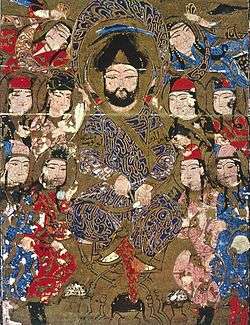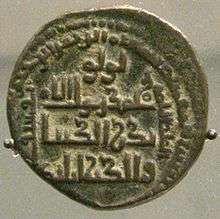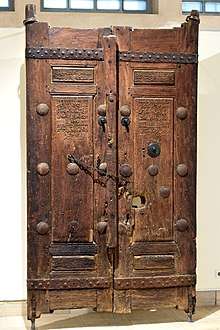Badr al-Din Lu'lu'
Badr al-Din Lu'lu' (Arabic: بدر الدين لؤلؤ) (died 1259) was successor to the Zengid emirs of Mosul, where he governed in variety of capacities from 1234-1259 following the death of Nasir ad-Din Mahmud. He was the first mamluk to transcend servitude and become an emir in his own right, anticipating the rise of the Bahri Mamluks to the sultanate of Egypt by twenty years. He preserved control of al-Jazira through a series of tactical submissions to larger neighboring powers, at various times recognizing Ayyubid, Seljuqs of Rûm, and the Mongol overlords. His surrender to the Mongols spared Mosul the destruction experienced by other settlements in Mesopotamia.


Rise to power
Lu'lu' was an Armenian convert to Islam,[1] in the household of the Zangid ruler Nur al-Din Arslan Shah I. Recognized for his abilities as an administrator, he rose to the rank of atabeg and, after 1211, was appointed as atabeg for the successive child-rulers of Mosul, Nur al-Din Arslan Shah II and his younger brother, Nasir al-Din Mahmud. Both rulers were grandsons of Gökböri, Emir of Erbil, and this probably accounts for the animosity between him and Lu'lu'. In 1126 Gökböri, in alliance with al-Muazzam of Damascus, attacked Mosul. As a result of this military pressure, Lu'lu' was forced to make a submission to al-Muazzam. Nasir al-Din Mahmud was the last Zengid ruler of Mosul, he disappears from the records soon after Gökböri's death. He was killed by Lu'lu', by strangulation or starvation, and his killer then formally began to rule in Mosul in his own right.[2][3]
Later reign

Later in his reign he used alliance with al-Muazzam of Damascus as a counterbalance to the threats of al-Malik al-Ashraf and Badr al-Din Lu'lu'. Badr al-Din Lu'lu' was appointed as atabeg for the successive child-rulers of Mosul, Nur ad-Din Arslan Shah II and his younger brother, Nasir al-Din Mahmud. Both rulers were grandsons of Gökböri, and this probably accounts for the animosity between him and Lu'lu'. In 1126 Gökböri, in alliance with al-Muazzam, attacked Mosul, while his ally attacked Homs. As a result of this military pressure, al-Ashraf and Lu'lu' made their submission to al-Muazzam, though al-Muazzam died the following year. Nasir al-Din Mahmud was the last Zengid ruler of Mosul, he disappears from the records soon after Gökböri's death. He was killed by Lu'lu', by strangulation or starvation, and his killer then formally began to rule in Mosul.[4][5][6]
Family
A daughter of his was set to marry Aybak, as his second wife after Shajar al-Durr. However, Aybak was killed before the marriage could take place.
References
- Islamic art and architecture 650-1250 By Richard Ettinghausen, Oleg Grabar, Marilyn Jenkins , pg, 134
- Gibb, pp. 700-701
- Patton, pp.152-155
- Gibb, pp. 700-701
- Encyclopaedia of Islam, 'Begteginids'
- Patton, pp.152-155
Bibliography
- Gibb, H.A.R. (1962) "The Aiyubids", in History of the Crusades, Volume 2: The Later Crusades, 1189-1311, Wolff, R.L. and Hazzard, H.W. (eds.), Ch. XX, pp. 693–714, University of Pennsylvania Press, Philadelphia PA.
- Patton, D. (1988) Ibn al-Sāʿi's Account of the Last of the Zangids, Zeitschrift der Deutschen, Morgenländischen Gesellschaft, Vol. 138, No. 1, pp. 148-158, Harrassowitz Verlag Stable URL: https://www.jstor.org/stable/43377738
External links
- Imam Awn al-Din Mashhad (Mosul)
- Imam Yahya ibn al-Qasim Mashhad (Mosul)
- Sittna Zaynab Mausoleum (Sinjar)